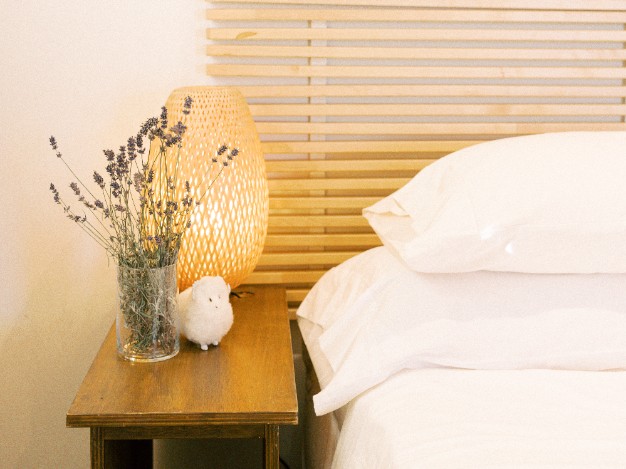Eco-Friendly Sleep: How to Create a Sustainable Bedroom

Your bedroom is where you spend nearly a third of your life. But is it truly supporting your health — and the planet’s?
From mattresses and bedding to lighting, furniture, and even the air you breathe, the choices you make in your bedroom impact both your well-being and the environment. The good news? With a few intentional swaps, you can create a sustainable sleep sanctuary that feels calm, cozy, and restorative.
Start with the Foundation: Your Mattress
Your mattress is the core of your sleep environment. Conventional mattresses often contain polyurethane foam, polyester fabrics, and chemical flame retardants that off-gas into the air while you sleep.
An organic mattress made with cotton, wool, and latex provides:
- Clean comfort – free from pesticides, VOCs, and flame retardants.
- Breathability – to keep you cool and comfortable.
- Durability – lasting longer than conventional foam.
This one swap alone makes a huge difference for your health and the planet.
Bedding That Supports You and the Planet
Bedding is what touches your skin every night — so quality matters. Instead of polyester blends or down filled with hidden treatments, opt for natural, organic fibers.
- Organic cotton sheets – breathable, soft, and pesticide-free.
- Wool duvets and toppers – regulate temperature and resist allergens.
- Organic pillows – filled with wool, latex, or cotton for safe, supportive comfort.
These choices reduce chemical exposure, shed fewer microplastics, and last longer.
Furniture & Decor: Choosing Natural Over Synthetic
The materials in your furniture and flooring have a big impact on air quality.
- Solid wood furniture (ideally FSC-certified) is safer and more durable than particleboard, which can release formaldehyde from glues.
- Natural fiber rugs and carpets (wool, jute, cotton) are better alternatives to synthetic carpets with polyurethane backing that off-gas for years.
- Non-toxic finishes like water-based stains or natural oils reduce chemical exposure.
Curtains, Carpets, and Other Textiles
Textiles are often overlooked, but they can either clean up or clutter your sleep space:
- Natural fiber curtains (cotton, hemp, or linen) avoid chemical coatings and are easy to wash.
- Carpets without polyurethane backing or fully natural wool carpets help reduce VOCs in the air.
These swaps add warmth and texture while keeping your space non-toxic.
Paint and Wall Finishes
Paint can be one of the biggest sources of VOCs in the bedroom. Choosing low-VOC or zero-VOC paints keeps the air cleaner — and safer for long nights of deep breathing.
Lighting for Rest and Sustainability
Lighting affects both your energy use and your circadian rhythm.
- Himalayan salt lamps create a soft amber glow that’s calming before bed.
- Red light lamps or bulbs are trending because they reduce blue light exposure and support melatonin production.
- LED bulbs are energy-efficient, but choose warm-toned ones for evening use.
The right light sets the stage for better sleep and lower energy consumption.
Air Quality and Ambiance
A healthy bedroom means clean air. Try:
- Plants like snake plants, spider plants, or peace lilies, which help filter toxins naturally.
- An air purifier — especially if you live in the city or your child has allergies or asthma.
- Swapping synthetic candles and sprays for essential oils or diffusers.
Together, these improve air quality while making your space feel fresh and relaxing.
Small Swaps That Make a Big Difference
Creating a sustainable bedroom doesn’t mean replacing everything at once. Start small with:
- Switching to natural laundry detergents for bedding.
- Using bamboo or wood storage instead of plastic bins.
- Reducing clutter — minimalism supports calmness and sustainability.
Each choice helps build a healthier sleep environment step by step.
Takeaway: A sustainable bedroom is more than just eco-friendly bedding — it’s about creating a non-toxic, restorative space from top to bottom. Start with your mattress and bedding, then layer in natural furniture, non-toxic paint, eco-friendly lighting, air purifiers, and plants. Every swap you make supports deeper rest and a healthier planet.
